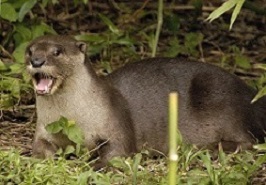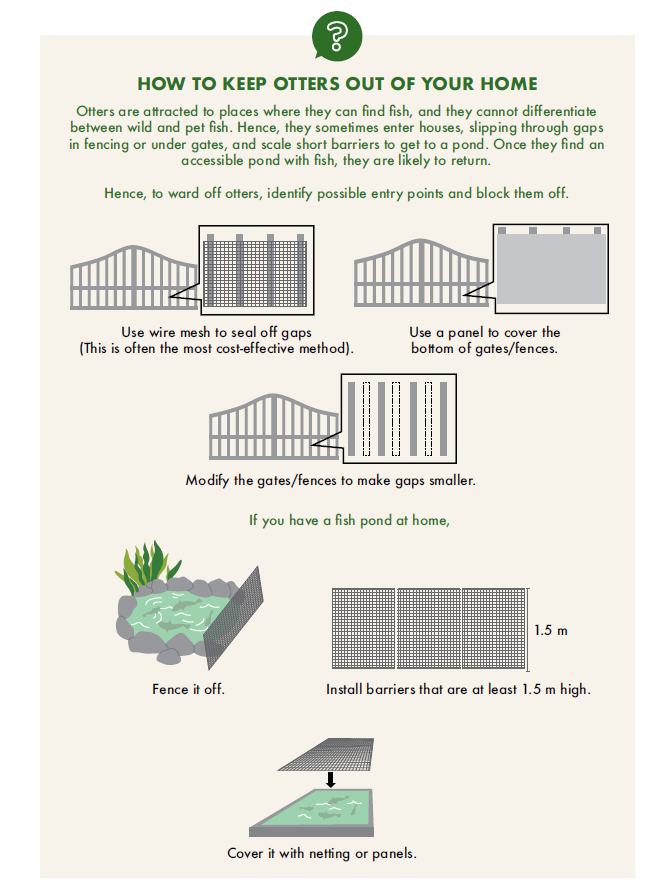Otters


What are they?
The Smooth-coated Otter (Lutrogale perspicillata), named after its velvety smooth coat, is one of the two otter species found in Singapore and is the largest otter in Southeast Asia. It is a mammal, often spotted in our mangroves, mudflats and coastal areas, where it forages for clams, fish, and other small creatures. Highly social and using smells and calls to communicate, these otters have webbed paws that are highly adapted for swimming. They are playful creatures, and like to swim in a pack of four to twelve while chasing after fish.
A social creature, the otter lives either in pairs or in family groups. Pups are born in a litter of up to five in a den by the riverbank and stay with the parent for some time.
Read on to find out more or download our otter advisories here and here!
Distribution & Habitat
While listed as critically endangered in Singapore, they are most regularly seen at Sungei Buloh Wetland Reserve and have been seen there since 1990s. Sightings have been reported increasingly often over the years in Pulau Ubin, Western Catchment Area and Changi as well. There have been recent sightings in many other places, some where they are definitely resident (e.g. Bishan-Ang Mo Kio Park) and others where they may only have been passing by (e.g. Singapore Botanic Gardens).
Did you know?
Did you know that this creature can stay underwater for up to eight minutes in a single breath? This allows it to hunt successfully for fish, frogs, crabs and turtles.
There have been recent sightings in many other places such as Bishan-Ang Mo Kio Park and Singapore Botanic Gardens, where the otters may pass by or temporarily reside at.

What to do when I encounter otters?
- DO NOT touch, chase or corner the otters. Observe them from a distance. Going too close to the otters may frighten them.
- DO NOT talk loudly and do not use flash photography. Noise and light may scare and provoke the otters.
- DO NOT feed the otters. The otters have their own food in the environment and their natural eating habits keep the ecosystem healthy.
- DO NOT litter or leave sharp objects in the water. Clean and safe waterways filled with fish and aquatic life make good habitats for the otters to frolic and feed in.
- DO keep your dog on a tight leash. Your dog might chase the otters and frighten them, and keeping your dog on a tight leash will help to keep it safe.
How to keep otters out of your home

If you have further queries, please contact us through our online feedback form at https://www.avs.gov.sg/feedback.